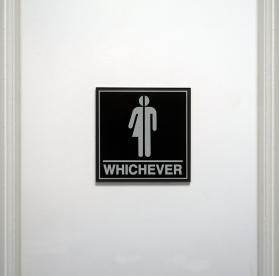I. Introduction
On October 18, 2017, Alexa Rios sued her former employer, Western Dental Services, Inc. Alexa worked as a front desk receptionist. During her employment, she received positive feedback for the work performed. When Alexa was hired, she identified herself as a male; Alexa is a transgender woman. Things allegedly turned for the worse when Alexa disclosed to Western Dental Services, Inc. her intent to transition from male to female.
Shortly after disclosing the news to her supervisor, Alexa allegedly became the victim of mockery and harassment. Alexa alleged that her supervisor’s reaction was to ask her “Are you going to have your breasts done? And are you going to keep your penis?” Alexa alleged she was mocked for trying to become a woman. Nobody from Western Dental Services ever substantively addressed Alexa’s discrimination or harassment complaints, and no investigations were conducted, according to Alexa.
In the end, Alexa’s supervisors made and entertained the demeaning and sexually inappropriate comments about her body and her status as a transgender woman. Alexa’s experience is far from rare. This is a common issue in today’s workplace. The 2016 National Transgender Discrimination Survey found that 26 percent of transgender people have lost a job because of bias, and that 50 percent have been harassed on the job. Given the rising tensions between sex, gender, and identity, it is more important than ever for employers to be fully aware of the new laws, rules, and regulations revolving around transgender employees and their rights in the workplace.
This article provides an overview of the recent legal developments, as well as insights and recommendations to avoid liability stemming from sexual harassment and discrimination against transgender employees. Part II of this article provides some background on what the term LGBTQ encompasses, with a specific emphasis on transgender individuals. Part III describes the current state of the law in California. Part IV offers recommendations for employer compliance and further handling.
II. Background: LGBTQ & Transgender Individuals
LGTQB is a widely accepted initialism, which stands for “Lesbian, Gay, Bisexual, Transgender and Queer.” It refers to a population of people united by having gender identities or sexual orientations that differ from heterosexual and cisgender majority. The term implies positive connotations, as it allows for the easy cognoscibility of individual and group identity.
Today, a larger number of individuals identify themselves as part of the LGBTQ community. This, in turn, translates into a greater percentage of the workforce in the U.S. identifying as LGBTQ. In fact, data shows that the percentage of American adults identifying as LGBTQ in 2017 was almost 5%. Indeed, Los Angeles is one of the cities with the largest LGBTQ group in the U.S. While the LGBTQ community encompasses a broad number of individuals, time and space constraints limit the focus of this article to transgender individuals in the workplace.
So, what is transgender? Transgender means someone whose gender differs from the one they were given at the time they were born. Transgender people may identify as male or female. Alternatively, they could also feel that neither label properly defines who they are, thus a non-binary identification. It is important for employers to know that being transgender has nothing to do with sexuality. A person can be bisexual and transgender, or heterosexual and transgender. As it will be discussed below, the new regulations implementing the Fair Employment & Housing Act provide more guidance with respect to transgender employees in the workplace.
How does someone become transgender? Although not always the case, transgender individuals can engage in a process known as transitioning. Transitioning is changing the way a person looks to become the gender they feel they belong to. This can take the form of medical intervention (e.g., hormone therapy), or simple changes in social conventions (e.g., changing pronouns and the way someone dresses). Yet, not every transgender person decides to transition. This is of particular importance, as the law still protects those who do not engage in the transition process.
These concepts are important to understand the interplay amongst the law, the workplace, transgender employees’ rights, and employers’ obligations.
III. Current State of Law in California
California has one of the most progressive and protective set of laws and rules to prevent discrimination against LGBTQ employees in general. Nevertheless, transgender employees have continued to experience discrimination in the workplace. Aware of this problem, the California legislature has developed greater protections for transgender employees. A brief overview of the new California legal developments follows.
California Government Code Section 12900 et seq. & Senate Bill-396
The California Fair Housing & Employment Act (“FEHA”), Gov. Code § 12900 et seq., deems certain employment practices, such as discrimination based on sex or work place harassment, such as hostile work environments, unlawful.
Seeking to impose greater obligations on employers to prevent workplace harassment and discrimination against transgender employees, Senate Bill-396 (“SB-396”) was introduced on February 15, 2017. It was approved by Governor Jerry Brown, and went into effect on July 1, 2017. The short time span between when SB-396 was introduced and going into effect, which was about 5 months, shows the bipartisanship and importance of this issue, at least in California.
In effect, SB-396 expanded employer’s requirement vis-à-vis protecting transgender employees by amending section 12950 of FEHA. Subdivision (a)(2) of section 12950 directs employers to display a poster containing transgender employees’ rights. The poster must be easily accessible and visible to all employees. The Department of Fair Employment & Housing has created a poster that employers can use.
SB-396 also added a new section to FEHA. Section 12950.1 introduces a new mandatory training requirement. Employers must provide a minimum of “two hours of classroom or other effective interactive training and education regarding sexual harassment to all supervisory employees . . .” As part of this requirement, employers must also provide training inclusive of harassment based on gender identity, gender expression and sexual orientation. However, section 12950.1 applies only to employers with 50 or more employees.
California Code of Regulations
SB-396 was not the end. In addition to the poster and training requirements, new regulations were issued to further protect transgender employees. Each is discussed below.
Section 11030: New Definitions
California Code of Regulations Section 11030 sets forth new, more encompassing definitions. Section 11030 provides guidance on what gender expression, gender identity, transgender, and the transitioning process all mean.
Subsection (e) of section 11030 defines transgender as “a general term that refers to a person whose gender identity differs from the person’s assigned sex at birth,” which is the colloquial definition of the term. Nonetheless, the regulations include more specific definitions for related, important terms. Subsection (a) of section 11030 defines gender expression as a “person’s gender related appearance or behavior, or the perception of such appearance or behavior, whether or not stereotypically associated with the person’s assigned at birth.” Section 11030 also defines gender identity as “each person’s internal understanding of their gender, or the perception of a person’s gender identity, which may include male, female, a combination of male and female, neither male nor female, a gender different from the person’s sex assigned at birth.” Employers need to be aware and understand this external-internal dichotomy. Moreover, employers must remember that being transgender is not solely identifying oneself as male or female. The regulations make clear that transgender could be a no-gender association.
Lastly, and perhaps one of the most important terms employers need to be familiar with, is transitioning. The regulations define transitioning as the process some transgender people go through to begin living as the gender with which they identify. The regulations provide examples of what the transition process may consists of, such as changes in facility usage or undergoing hormone therapy, surgeries or other medical procedures. While this is not an exhaustive list, it provides a solid basis to guide employers on what they might witness or observe.
Section 11034: Facilities & Conditions in the Workplace
Besides preventing harassment, the new regulations also seek to combat sex discrimination against transgender individuals. Section 11034 delineates new regulations ranging from the use of facilities to accommodating transgender employees’ transitioning process.
First, employers are legally required to allow their employees to use facilities, such as bathrooms, that correspond to the employee’s gender identity or gender expression, without regard to the employee’s assigned sex at birth. Similarly, “[e]mployers . . . with single occupancy facilities under their control shall use gender-neutral signage for those facilities, such as ‘Unisex,’ ‘Gender Neutral,’ or ‘All Gender Restroom.’”
Second, employers cannot impose grooming or dress codes that are inconsistent with an individual’s gender identity or gender expression. For example, if an employer has an employee who identifies as a transgender male, then the employer cannot force all females to wear dresses or make up. While the regulations carve a “business necessity” exception to these requirements, employers must approach this with caution and consult with their legal counsel.
Third, the regulations prohibit employers from discriminating against a transgender employee who has transitioned, is in the process of transitioning, or is perceived to be transitioning. Transitioning is not solely a physical process; rather, it features a social component too. Hence, employers must bear in mind that medical treatment is just part of the transitioning process. Changes in name and pronouns, use of different bathroom facilities, and other socially-oriented activities are also part of transitioning.
Section 11031: Unavailability of Bona Fide Occupational Qualification as a Defense
Bona fide occupational qualification is a defense to the use of facially discriminatory practices when they are reasonably necessary to the normal operation of an employer’s business enterprise. Nevertheless, the regulations explicitly make this defense inapplicable when the discrimination is based on the fact that an employee is transgender. Therefore, employers must not rely on business necessity to justify blatant discriminatory practices against transgender employees.
IV. Recommendations for Employers
Ensuring A Safe Environment in the Workplace
First and foremost, Employers should maintain a secure and safe environment amongst and between co-workers and supervisory personnel. This includes frequent training sessions and keeping supervisory personnel well-informed. While the amendment to FEHA requires mandatory training, employers should try to provide more training than legally required if possible. Employers should also keep all training materials and maintain efficient recordkeeping. By the same token, employers must adopt harassment- and discrimination-free employment policies, emphasizing respect amongst co-worker regardless of their sexual or gender identification.
Having an open-minded work culture and providing the appropriate channels of discussion regarding these types of issues are crucial. Employers have to project to transgender employees that Human Resources is there to help and assist them in case of any incident, peculiarity, questions, or concerns. Further, employers must take harassment or discrimination complaints seriously by conducting meaningful and timely investigations, reprimand those employees or supervisors engaging in wrongful conducts, etc. This would not only show to transgender the employer is protective of transgender employees’ interest, but also show to the rest of the employees that no such unlawful behavior is tolerated or permitted.
Be Ready: Develop Workplace Transition Plans
It is important that employers be prepared in accommodating transitioning transgender employees. While there is no clear-cut methodology or system for approaching this, there are some general points employers can keep in mind.
First, once an employer has determined what its transition plan will look like, it must be included in their employee handbooks. It is advisable that employers also make these instructions easily available and noticeable to all employees. For example, by creating a poster and putting it in the lunch area.
Second, the plan should include the specific processes transgender employee must undertake with the employer prior to beginning the transitioning process. This would include a contact person within Human Resource, submit a request for consideration or potentially time off, etc. The plan should also show that management and Human Resources staff will be supportive every step of the way. Additionally, designating a point of contact in management or Human Resources for helping and assisting the transitioning employee is important. It permits easier management and accessibility for transgender employees.
Third, employers need to be proactive in determining the procedures for implementing transition-related workplace changes after the transition is complete. This includes adjustments in personnel and administrative files, accessibility to different facilities (e.g., bathrooms, lockers, etc.), and generally monitoring the adjustment of the transitioned employee.
Avoid Biases
Lastly, employers must remember that just because transgender employees may look different, that should not translate into treating them negatively from an employment context. The more familiarized employers become with what transgender means and entails, the transition process, and how it may affect an employee’s life perspective, the less likely biases will permeate in the workplace. This, in turn, translates into preventing sexual harassment and discrimination incidents. Employers must provide constant reminders to all personnel that they cannot discriminate on the basis of sex orientation or identity. Acknowledging and respecting an employee’s persona will always go a long way.
Conclusion
Employers need to be proactive in training supervisors, employees, and management on the legally correct and appropriate procedures and behaviors and on what constitutes impermissible conduct. With the ongoing battles for equality and non-discrimination, employers should expect the recently-enacted rules and regulations to be strictly enforced. It is likely that even more protective laws, rules and regulations will be issued in the future. Therefore, employers need to continue to evolve in terms of providing a welcoming and safe working environment not only for transgender employees, but to all employees.
[1] Complaint for Damages at 1, Rios v. Western Dental Services, Inc., No. RG17879108 (Cal. Sup. 18 Oct. 2017), 2017 WL 5150729.
[2] Matthew Goodin, FEHC Issues New Regulations Regarding Transgender Identity & Expression, 27 No. 20 Ca. Emp. Letter 4 (2017).
[3] American Psychology Association, Lesbian, Gay, Bisexual, Transgender, American Psychology Ass’n., http://www.apa.org/topics/lgbt/index.aspx (last visited 26 July 2018).
[4] Id.
[5] Frank Newport, In U.S., Estimate of LGBT Population Rises to 4.5%, Gallup, https://news.gallup.com/poll/234863/estimate-lgbt-population-rises.aspx (last visited 26 July 2018).
[6] Dennis Romero, L.A. Almost Has America’s Largest LGBT Community, L.A. Weekly, http://www.laweekly.com/news/la-almost-has-americas-largest-lgbt-community-5450063 (last visited 26 July 2018).
[7] Gary J. Gates, LGTB Identity: A Demographer’s Perspective, 45 Loy. L.A. L. Rev. 693, 696 (2012).
[8] GLAAD, Transgender FAQ, Glaad, https://www.glaad.org/transgender/transfaq (last visited 7 Aug. 2018).
[9] Planned Parenthood, What Do I Need to Know About Transitioning, Planned Parenthood, https://www.plannedparenthood.org/learn/sexual-orientation-gender/trans-and-gender-nonconforming-identities/what-do-i-need-know-about-transitioning (last visited 26 July 2018).
[10] California Legislative Information, SB-396 Employment: gender identity, gender expression, and sexual orientation (2017-2018), https://leginfo.legislature.ca.gov/faces/billHistoryClient.xhtml?bill_id=201720180SB396 (last visited 8 Aug. 2018).
[11] Id.
[12] Cal. Gov. Code § 12950(a)(2) (“. . . every employer shall act to ensure a workplace free of sexual harassment by implementing the minimum requirements . . . Post a poster developed by the [Department of Fair Employment & Housing] regarding transgender rights in a prominent and accessible location in the workplace.”).
[13] The poster can be found at the Department of Fair Housing & Employment’s website via this link: https://www.dfeh.ca.gov/wp-content/uploads/sites/32/2017/11/DFEH_E04P-ENG-2017Nov.pdf.
[14] Cal. Gov. Code § 12950.1(a).
[15] Cal. Gov. Code § 12950.1(c).
[16] Cal. Gov. Code, supra note 12.
[17] 2 C.C.R. § 11030(e).
[18] 2 C.C.R. § 11030(a) (emphasis added).
[19] 2 C.C.R. § 11030(b) (emphasis added).
[20] 2 C.C.R. § 11030(f).
[21] Id.
[22] 2 C.C.R. § 11034(e)(2)(A)
[23] 2 C.C.R. § 11034(e)(2)(B).
[24] 2 C.C.R. § 11034(g).
[25] Id.
[26] 2 C.C.R. § 11034(i)(4).
[27] 2 C.C.R. § 11010(a).
[28] 2 C.C.R. § 11031(a)(5).




 i
i


